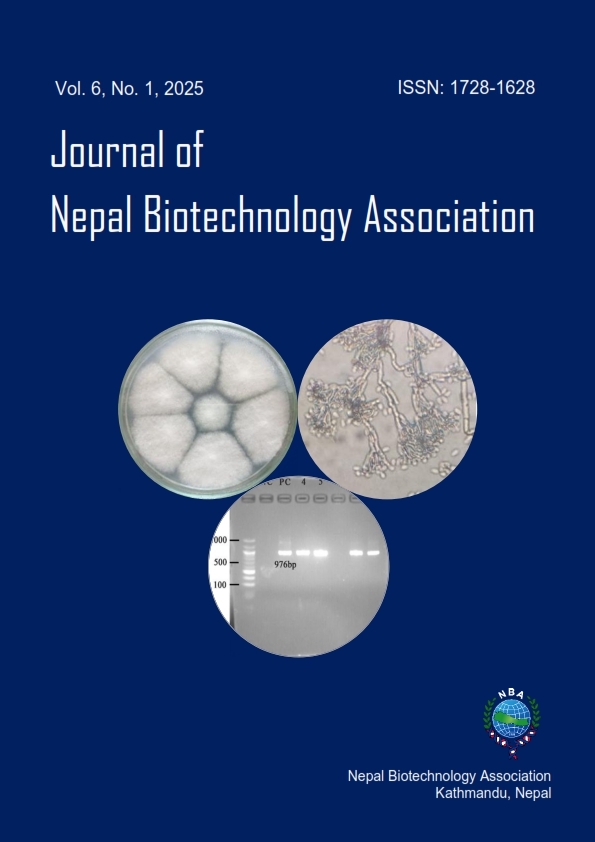Antibacterial Activity of Moringa Oleifera Leaf Extract Against Clinically Significant Bacteria
DOI:
https://doi.org/10.3126/jnba.v6i1.76915Keywords:
Antibacterial activities, Moringa oleifera, Multidrug-resistant bacteria, Secondary metabolitesAbstract
The global rise of multidrug-resistant (MDR) bacteria calls for different alternative antimicrobial strategies. Moringa oleifera, which is found to be rich in secondary metabolites compounds, has shown some antibacterial potential. This study assesses the ethanol-extracted antibacterial activity of M. oleifera leaves against different clinically significant bacteria like Staphylococcus aureus, Pseudomonas aeruginosa, Escherichia coli, Enterococcus faecalis and Klebsiella pneumonia. A laboratory-based experimental study was done using the disc diffusion method at two extract of different concentrations (500 mg/ml and 1000 mg/ml). Minimum inhibitory concentration (MIC) and minimum bactericidal concentration (MBC) tests were performed to observe bacteriostatic and bactericidal effects. The study identified the presence of alkaloids, flavonoids, tannins, saponins and terpenoids, highlighting the diverse phytochemical composition of the analyzed sample. The extract of different concentrations demonstrated the zone of inhibition for S. aureus (12 mm at both concentrations) and P. aeruginosa (17 mm at 500 mg/ml, 20 mm at 1000 mg/ml). E. coli only exhibited the inhibition (11 mm) at 1000 mg/ml. Likewise, E. faecalis and K. pneumoniae showed inhibition (16 mm and 12 mm) at 1000 mg/ml. However, MIC and MBC tests were found negative, where the regrowth of the bacteria was observed, which further suggested that the liquid culture has only limited efficacy. The selective secondary metabolites, particularly against P. aeruginosa advocates potential external applications or adjunctive use with antibiotics rather than the standalone. However, the lack of bactericidal activity in liquid culture shows the need for further research on higher concentrations, active compound purification, and synergistic effects with conventional antimicrobials.
Downloads
Downloads
Published
How to Cite
Issue
Section
License
Copyright (c) 2025 Nepal Biotechnology Association, Kathmandu, Nepal

This work is licensed under a Creative Commons Attribution-NonCommercial-NoDerivatives 4.0 International License.




